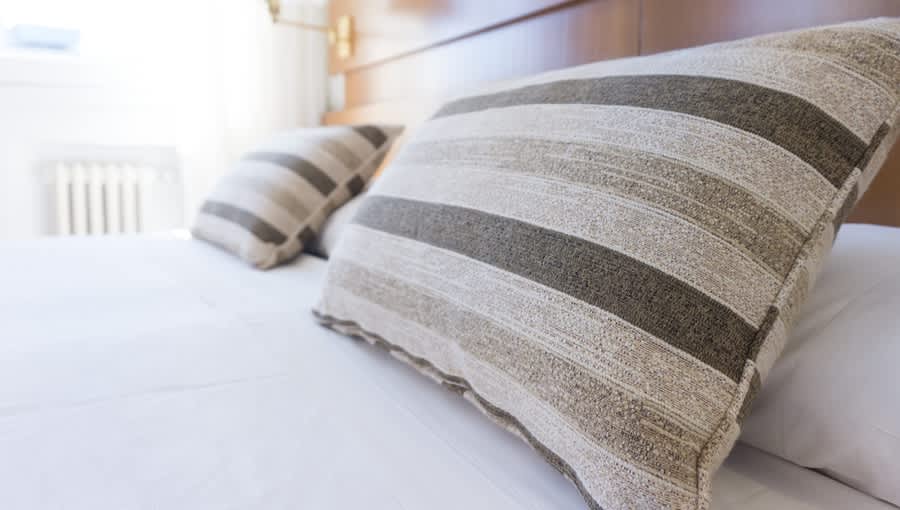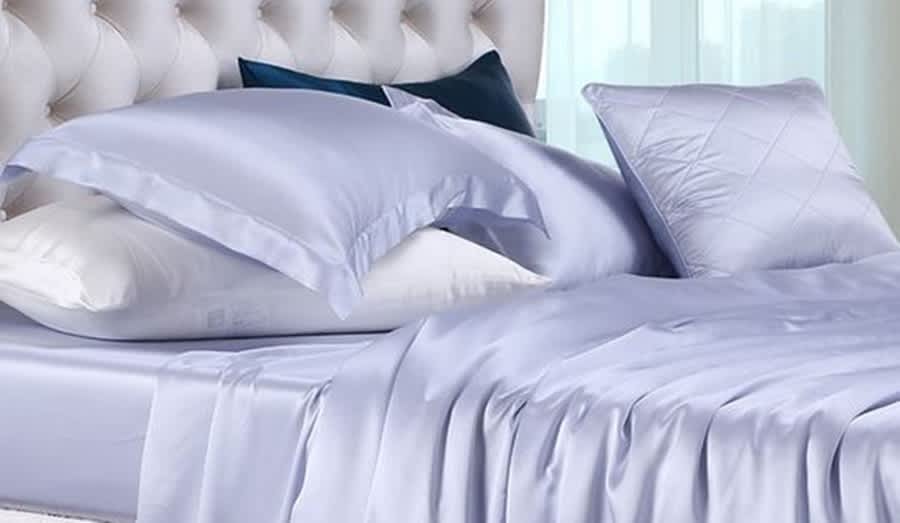How to Choose Sheets and Covers for Your Bed
Everyone who has ever tossed and turned on scratchy or clammy sheets knows how important good bedding is for a good night’s sleep. But what constitutes good bedding? There are so many options on the market that the act of choosing bed sheets and covers can be overwhelming. You need to consider the fabric, the weave, the thread count...
This guide is designed to help you make the right decision, so read on if you are planning to treat your bedroom to new bedding!

Cotton
Comfortable and durable, cotton is the most frequently used fabric in bedding. This natural fibre is absorbent, breathable and easy to wash. Egyptian cotton is especially valued, because its raw fibre is longer and yields a softer, smoother finished product. However, even more important than the geographical origin is the thread count, the ply and the weave of the cotton fabric.
Thread count: Cotton sheets are described by thread count, which literally stands for the number of threads per one square inch of fabric. A rule of thumb is: the higher the thread count, the softer and more durable the sheets. As a minimum, look for a thread count of about 200; expensive sheets are in the over-500 range.
Ply: Here, the rule is: the less, the better. To be precise, most high-quality cotton fabrics are made with single ply threads. Sometimes, manufacturers use two-ply threads to inflate the thread count, but the final products will not look, feel and behave as well as single ply.
Weave: The two most common cotton fabric weaves are percale and sateen. Percale is a plain, evenly flat weave that creates a crisp and fresh feel to the bed sheets. Sateen, with its softness and lustre, looks and feels more luxurious. Neither is inherently better that the other; here, the choice boils down to personal preference.
Linen
The term linen is often used synonymously with bedding, but only fabric made from the fibres of the flax plant is strictly speaking linen.
Fine linen bedding is soft and smooth and it feels cool to the touch. Linen shares other desirable characteristics with cotton, being absorbent, breathable, durable, and easy to care for.
Brand-new linen is more prone to wrinkling than cotton, but the wrinkles will become smoother through use and washing.
Linen is one of the few fabrics that are stronger wet than dry. Its fibres do not stretch and are resistant to damage from abrasion, but low elasticity also means that the fibres will eventually break if the fabric is folded and ironed at the same place repeatedly over time.
You don’t need to iron linen, as it is supposed to have a relaxed, laid back look, but if you must, ensure that your iron is on a low heat setting and that the linen is still slightly damp.
Silk
The next natural bedding fabric to consider is silk. Silk bedding is porous and absorbent and will keep you warm in the winter and cool in the summer, just like cotton and linen. However, silk is more delicate than cotton and linen when it comes to washing, so follow the manufacturer’s instructions closely.
If you find that 100% silk bedding is out of your price range, you may want to consider investing in at least silk pillow cases. That is, if you want glossy hair and hydrated skin... Experts say that the protein-infused structure of the silk strands is naturally equipped to tame your locks and to keep your face smooth by locking the moisture close to the skin. The result is a better-looking morning you!

Artificial Fibres
Viscose, rayon, modal, lyocell and tencel are some of the popular artificial fibres. These fibres are man-made from natural raw materials derived from cellulose or plant protein; the pulp of beech tree, eucalyptus tree or bamboo is often used in the production. Fabrics made from artificial fibres can have many qualities of natural fibre fabrics. They are absorbent, have a soft, smooth feel, and are breathable. They can also be dyed to vibrant colours.
Synthetics
Polyester, acrylic and nylon are some of the synthetic fabrics made from petrochemicals that are most commonly used in bedding. Synthetic bedding is in demand because it is more affordable than natural or artificial fabrics. Synthetic fabric can be dyed to vibrant colours and is less likely to wrinkle. However, it is also more likely to pill than natural or artificial fabrics. Due to their low porosity and absorbency, synthetics can be uncomfortable in warm or humid climates.
Microfibre is finely woven polyester. Sheets made from this fabric are soft, durable and stain-resistant, but they are not as breathable as cotton and can make the sleeper hot in summer.
Blends
Blended fabrics are as a rule inexpensive, easy-to-care-for, durable and wrinkle-resistant, making them suitable for a child’s room. There are many blends on the market, but the most common one used in bedding is poly cotton, a combination of cotton and polyester fibres.
Manufactures may describe any poly cotton with less than 50% of polyester as cotton-rich. Experts recommend going for blends that have a higher percentage of cotton than of manmade fibres, for example 65% cotton and 35% polyester.
Flannel
This soft woven fabric can be made from wool, cotton, or synthetic fibre. Flannel is usually napped (brushed) on one side or on both sides to create fine fuzz. Soft and cosy, flannel bedding will keep you toasty during the cold nights, but can be too hot on warmer evenings. Another downside is that flannel is prone to pilling.
Other Bedding Considerations
Measurements: It goes without saying, but we’ll say it anyway: buy sheets and pillowcases for mattresses and pillows you have. So measure!
Fitted or not: A fitted sheet will stay in place, even with a restless sleeper. If you prefer a flat sheet, learn how to tuck it snugly under the mattress.
Washing considerations: Get to know how easy or how demanding it is to care for specific bedding before buying it and always follow the washing instructions on the label.
Rule of three: It is advisable to have three bedding sets for every bed that is used regularly: one for the bed, one for the linen closet, and one in the laundry. This way, you will minimise wear and always have a clean set at hand.
Now that you are equipped with the basics, visit the bobshop bedding section and shop with confidence!